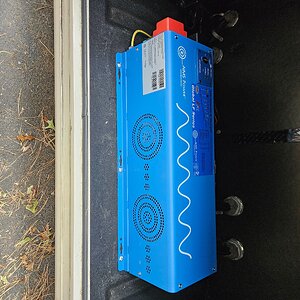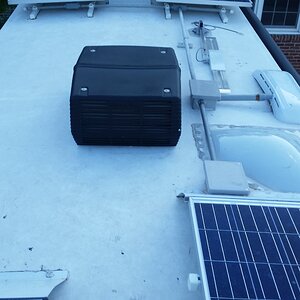dixiemountaineer
RVF Regular
- Joined
- Nov 4, 2020
- Messages
- 10
Hello all! I'm new to the forum which looks to be a wealth of information. After reading through the various topics, I've already learned a few things I realized I never knew. That being said, I have a question about a weight distribution hitch.
I recently acquired a 2016 Rockwood Micro Mini Lite, just shy of 27 feet. The factory spec sheet I obtained for it states the the dry weight is 4514 lbs with a hitch weight of 625 lbs. After checking these stated weights, my actual hitch weigh is 485 lbs and that is loaded with personal effects (not much), propane tanks full, battery and all holding tanks empty. I'm towing this with a 2018 Chevy Silverado Z71 4wd and it tows quite well with no real effort that I can see from the truck and I have very minimal squat on the rear end.
On advise from a family member, I invested in a weight distribution hitch with sway control. The previous rv owner had one and I later found the springs with frame hangars/claps in a storage compartment but no drawbar/hitch head. It's the EAZ Lift brand with 1000lb springs. So, based upon the stated hitch weight of 625 before I knew the actual real hitch weight, I ordered an entirely new setup, same brand, with 1200 lb springs as I was advised that the hitch weight ideally should fall in the middle to allow some wiggle room for additional weight.
My question is, would it be preferable to use the 1000 lb springs on this 1200lb capable setup I have now or should I just stick to the new 1200lb springs. The springs are identical in size and design except for the the rv end thickness, the 1200 being bigger. I'm looking at this as the springs being interchangeable (?) in that I could use the 1000 pounders and not have a stiff ride I might have with the larger springs with a lesser tongue weight, and have the larger ones available if needed.
I hope this made sense to everyone and all advise/comments are welcome. Thanks much in advance!
Jim
I recently acquired a 2016 Rockwood Micro Mini Lite, just shy of 27 feet. The factory spec sheet I obtained for it states the the dry weight is 4514 lbs with a hitch weight of 625 lbs. After checking these stated weights, my actual hitch weigh is 485 lbs and that is loaded with personal effects (not much), propane tanks full, battery and all holding tanks empty. I'm towing this with a 2018 Chevy Silverado Z71 4wd and it tows quite well with no real effort that I can see from the truck and I have very minimal squat on the rear end.
On advise from a family member, I invested in a weight distribution hitch with sway control. The previous rv owner had one and I later found the springs with frame hangars/claps in a storage compartment but no drawbar/hitch head. It's the EAZ Lift brand with 1000lb springs. So, based upon the stated hitch weight of 625 before I knew the actual real hitch weight, I ordered an entirely new setup, same brand, with 1200 lb springs as I was advised that the hitch weight ideally should fall in the middle to allow some wiggle room for additional weight.
My question is, would it be preferable to use the 1000 lb springs on this 1200lb capable setup I have now or should I just stick to the new 1200lb springs. The springs are identical in size and design except for the the rv end thickness, the 1200 being bigger. I'm looking at this as the springs being interchangeable (?) in that I could use the 1000 pounders and not have a stiff ride I might have with the larger springs with a lesser tongue weight, and have the larger ones available if needed.
I hope this made sense to everyone and all advise/comments are welcome. Thanks much in advance!
Jim











